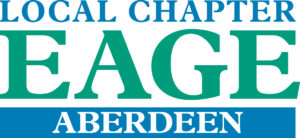15th October 2019
Event phone:
Abstract
Joint lecture with EAGE Local Aberdeen Chapter

Steve Furnival, Principal Reservoir Engineer, Axis Well Technology
Carbon Capture and Storage (CCS) has been talked about in the UK for years; or should that be (for at least a couple of) decades?
Worldwide, CO2 has been injected into reservoirs since the early 1970s for Enhanced Oil Recovery (EOR). Whilst not often sourced by Carbon Capture, CO2 EOR can be thought of as a form of Storage as, if successful, the majority of the injected CO2 will remain locked in the subsurface if managed correctly, hence it’s been an important contribution to the technology.
The first project in which CO2 was injected into the subsurface purely to avoid emissions to atmosphere was the Sleipner project in Norway. Here, the produced wet gas contains too much CO2 to be injected into the gas grid, therefore the bulk of the CO2 is removed using a chemical plant. But, rather than vent the CO2, Statoil capture, compress and inject the excess CO2 because it’s cheaper than paying the emissions tax introduced by the Norwegian government in 1991. This process has injected around 1.0 million tonnes per year (Mt/yr) or 52 MMscf/d since start-up in 1996. Statoil, now Equinor, have also operated or been an important partner in other CCS projects in Norway (Snohvit) and Algeria (In Salah).
Closer to home, we’ve done a lot of talking. We’ve done a lot of academic study. We’ve even had three projects enter Front End Engineering and Design (FEED) but we’ve never seen a project reach Final Investment Decision (FID). Why not? It’s probably no surprise but a common component in these failures is the UK Government. Back in 2007, it was BP and SSE who were “promised” and then “denied” funding for their DF-1 project which would have seen CO2 from the Peterhead power station injected into Miller. Next was the government’s first CCS competition in 2010 in which E.On was planning to develop a new power plant called Kingsnorth in the Thames Estuary with the resulting CO2 piped to the (very) depleted SNS gas field Hewett with its numerous plugged & abandoned wells; here we note E.On got cold feet about the same time the government withdrew funding. The second CCS competition saw £1B of “guaranteed” innovation funding withdrawn in Nov 2015 from the Shell & SSE Peterhead/Goldeneye and the Drax, Alstom, BOC & National Grid White Rose projects. Yes, big sums of government money, i.e. our tax, but small compared with the cash that has been invested in renewables, plus what will be required to get the Hinkley Point-C nuclear plant built and operating.
So, given this history, why would any company or consortia even bother trying to develop CCS in the UK? Well, young Greta Thunberg and the greater environmental movement might be focusing minds, but even before she became headline news there were several projects already in development. We’ll discuss three such projects, Northern Lights (in Norway), Acorn and the Clean Gas Project (in UK). These projects are not necessarily focussed on abated power production but the decarbonisation of heavy industry, something renewables will find challenging.

Figure 1: CO2 Plume Development in the Utsira Sands (Sleipner Project)

Figure 2: Shallow Seismic Line from WNW to ESE across Endurance and up through seabed outcrop

Figure 3: Over 7200 km of CO2 Pipelines in USA

Figure 4: Snohvit CCS Project
Many thanks to our sponsors Axis Well Technology
Venue Information
Venue information
Venue name:
Jurys Inn


